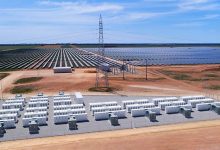Australia’s principal energy institutions have outlined some of their preferred features of a new energy market that they say is needed to accommodate the massive technical and regulatory shift in a grid that will soon be dominated by renewable energy.
The Energy Security Board late on Monday released the first of a series of discussion papers, outlining the principals of what it describes as a “two-sided market”, along with the first iterations of new markets for key services such as system strength and “synchronous” inertia, as well as an “ahead” market that will help the market operator’s planning.
The ESB and its members – the heads of the Australian Energy Market Operator, the Australian Energy Market Commission and the Australian Energy Regulator – hope to finalise an outline of the market by the end of the year, seek final approval by 2022 and bring it into effect in 2025.
Western Australia is doing its own review of its independent grid, although it has a more ambitious timeline and hopes to bring the new rules into effect in 2022.
It has already laid out its distributed energy roadmap that addresses issues from the huge growth in rooftop solar, and how to harness the benefits of battery storage, demand response and electric vehicles. See our Energy Insiders podcast interview with W.A. energy minister Bill Johnston.
The re-write of the Australian energy market rules is an admission that the current set-up is no longer fit for purpose. It was designed for a centralised, fossil-fuel grid, but Australia is headed towards an annual share of at least 50 per cent renewables by 2030, and up to 90 per cent by 2040.
The transition could happen even more quickly if politics, policies, rules and regulations don’t get in the way, and the ESB notes that shares of 50 per cent will occur regularly in the main grid by 2025, and are already reaching peaks of 142 per cent in South Australia.
“While the NEM (National Electricity Market) design has performed well in the past, the future is very different,” the ESB says, pointing to the shift in distributed energy, the creation of new business models, and the flexibility and the complexity that goes with it.
“The needs of the power system will change throughout the transition and this means that the framework and regulatory arrangements need to be flexible so the set of system services can be updated, without lengthy regulatory delays, to keep up with changing needs and, importantly, to capture and encourage technology improvements.”
The emergence of a “two-sided” market has already been flagged, and in principal means that the generators and big utilities are not the only people making decisions about buying and selling in the grid.
The emergence of rooftop solar, batteries and EVs will give opportunities for consumers – and more likely firms that can “aggregate” their resources with technologies such as “virtual power plant” – to play in the market and add value to those assets.
The push for a new markets for inertia, system strength and operating reserves, and what AEMO describes as “ahead” markets will likely be as fascinating as it is contested, given that every player in the market will be talking their own book so that their preferred technology – be it existing coal and gas plants, new pumped hydro, battery storage, demand response or wind and solar – is favoured by the new rules.
The new markets are considered necessary because these critical services – including inertia – are currently supplied “for free” by the existing fossil fuel plants. But as these plant exit the market, and are largely replaced by inverter based technologies such as wind, solar and batteries, the regulators say there is a need for a new market signal to ensure that the services are available.
There is, of course, great debate about exactly what service is needed, and to what extent. Important testing has and will take place at facilities such as the Tesla big battery at Hornsdale, which has already provided its worth in the frequency and ancillary services market, in fast response and system security, and is about to test the delivery of inertia responses in its expanded facility.
As the ability of this battery and other technologies to provide those system services currently delivered by coal and gas generators is proven, then the market will need to evolve to take that into account. The creation of an effective market for these services will mean reduced need for “directions” and interventions by the market operator.
The “ahead” market is also considered necessary by AEMO to help in its planning to operate the grid. It basically requires generators to commit to a certain output ahead of time – it could be several hours, a day, or even more – to ensure there is enough supply as the portfolio becomes increasingly weather dependent.
There are four different options for the “ahead” market, which is used widely in the US market and is favoured by AEMO boss Audrey Zibelman.
market participants currently give an indication ahead of time of the amount of capacity they will offer, but AEMO wants these to be binding – either physically or financially – to give it more confidence about supply.
Interestingly, the ESB talks of a “practical, staged implementation”, which suggests that it recognises that it may not get the settings right first time round, and that improvements and adjustments, and a regulatory nimbleness hitherto unseen in the Australian market, will be required.










